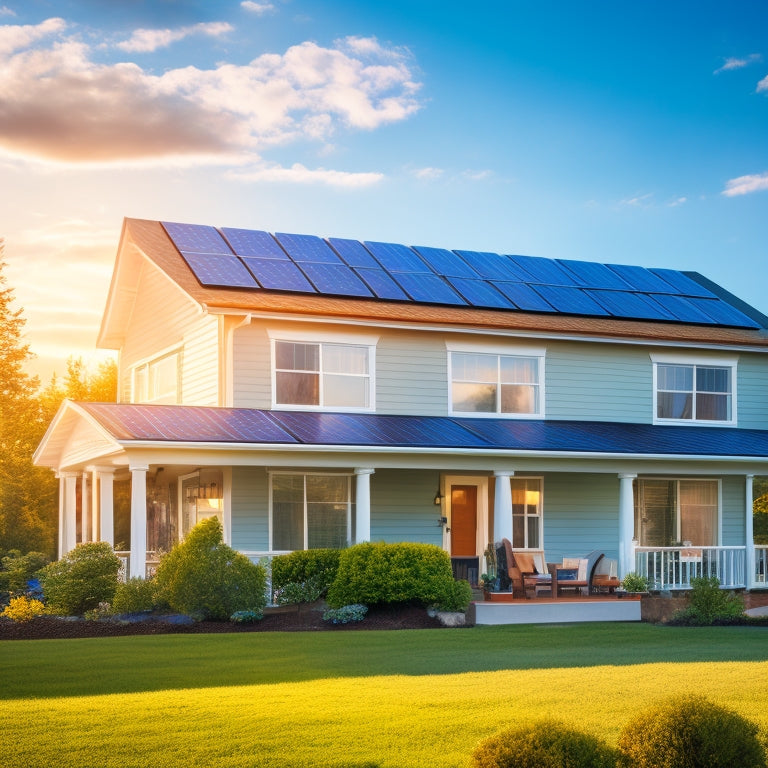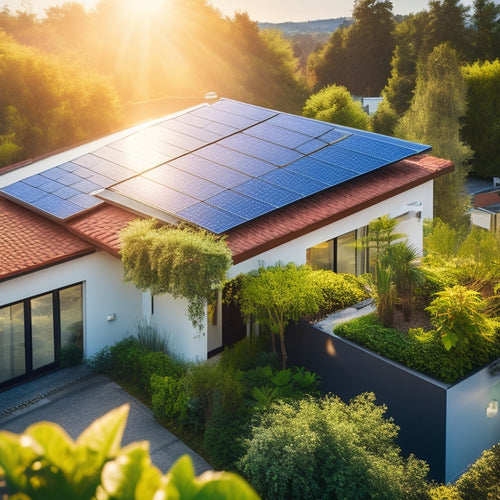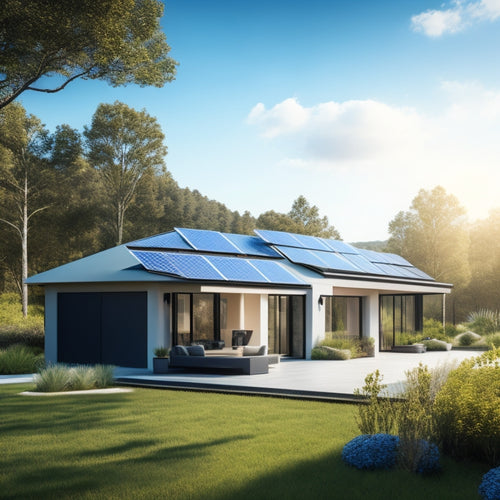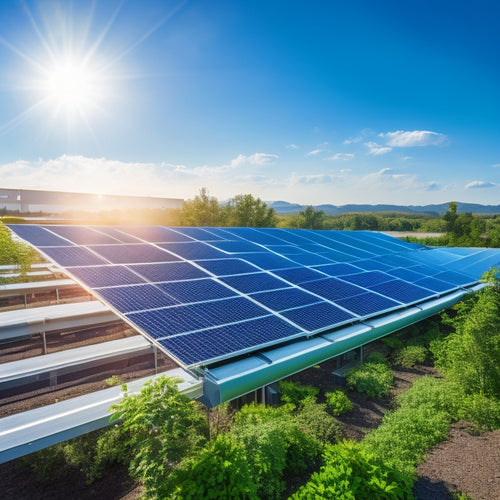
3 Steps to Installing Solar Power for Home Near Me
Share
You're about to release the power of solar energy for your home, and by following three critical steps, you'll be well on your way to utilizing the sun's energy and cutting your reliance on the grid. First, assess your home's solar potential by evaluating sunlight exposure, solar orientation, and shading from trees or nearby structures. Next, choose the right solar installation for your needs, balancing efficiency and cost. Finally, guarantee a smooth installation and maintenance process by selecting a professional installer and understanding warranty terms and requirements. Now, get ready to maximize your energy savings - there's more to investigate.
Key Takeaways
- Assess your home's solar potential by evaluating sunlight exposure, solar orientation, and shading from trees or nearby structures.
- Choose the right solar installation by selecting suitable solar panel types based on efficiency and cost, balancing installation costs with long-term energy savings.
- Ensure a professional installation that complies with building codes, includes system inspection and testing, and provides warranty terms and maintenance requirements.
- Plan for a few days to a week of installation duration, depending on the complexity of the project and the installer's workload.
- Regular maintenance, including cleaning, is crucial to maximize the system's performance and ensure warranty validity.
Assessing Your Home's Solar Potential
As you contemplate installing solar power for your home, evaluating your home's solar potential is the crucial first step. This involves analyzing the amount of sunlight your home receives, which greatly impacts the energy efficiency of your solar power system.
You'll want to examine your home's solar orientation, including the direction your roof faces and any shading from trees or nearby structures. South-facing roofs with little to no shading receive the most sunlight, making them perfect for solar panels.
However, don't rule out east- or west-facing roofs, as they can still generate significant energy. You'll also need to take into account your roof's size, material, and condition to guarantee it can support the weight of the solar panels.
A thorough analysis of your home's solar potential will help you determine the best system size, layout, and configuration to maximize your energy output. By understanding your home's solar potential, you can make informed decisions about your solar power installation and reap the benefits of clean, renewable energy.
Choosing the Right Solar Installation
With your home's solar potential assessed, you're ready to choose the right solar installation for your needs. This involves selecting the suitable solar panel types and installation costs that fit your budget and energy requirements.
| Solar Panel Type | Efficiency | Cost per Watt |
|---|---|---|
| Monocrystalline | 20-22% | $2.50-$3.50 |
| Polycrystalline | 15-18% | $2.00-$3.00 |
| Thin-Film | 7-14% | $1.50-$2.50 |
| Bifacial | 18-22% | $3.00-$4.00 |
| PERC | 18-20% | $2.50-$3.50 |
When choosing a solar installation, consider factors such as your energy consumption, available roof space, and local building codes. It is crucial to balance the upfront installation costs with the long-term energy savings. A reputable solar installer can help you steer through these decisions and provide a customized solution that meets your specific needs. By selecting the right solar installation, you'll be able to maximize your energy savings and reduce your carbon footprint.
Installing and Maintaining Your System
Your solar installation is now ready to be set up on your roof. The installation process typically takes a few days to a week, depending on the complexity of the system and the size of your roof. A professional solar installer will guarantee that your system is installed correctly and meets local building codes.
Once installed, your system will be inspected and tested to verify it's functioning properly. You'll receive training on how to monitor and maintain your system, as well as information on its performance and energy production.
Many solar installers offer financing options to help make your solar investment more affordable. Be certain to ask about these options when selecting an installer.
It's crucial to maintain your system regularly to achieve peak performance. Regular cleaning of the panels and inverters can help maximize energy production.
Most solar installers offer system warranties that cover repairs and replacements for a certain period. Be sure to understand the terms of your warranty and the maintenance requirements to keep it valid.
With proper installation and maintenance, your solar system can provide you with clean, reliable energy for years to come.
Frequently Asked Questions
Can I Sell Excess Energy Back to the Grid?
You can sell excess energy back to the grid through net metering benefits, which allow you to generate energy credits; these credits are redeemable when you need power, or you can participate in energy credit programs to offset your bill.
Are Solar Panels Covered Under My Homeowner's Insurance?
As you bask in the glow of renewable energy, you're wondering if your solar panels are insured. Rest assured, your homeowner's insurance policy likely covers them, but check your policy for specifics on solar panel maintenance and coverage limits to avoid any shocks.
Can I Install Solar Panels on a Rented Property?
You'll need to review your rental agreements and obtain your landlord's consent before installing solar panels on a rented property, as modifications to the property typically require their approval and may impact your lease terms.
How Do Solar Panels Affect My Property's Resale Value?
You'll be glad to know that solar panels enhance your property's resale value, as they're a sought-after feature, offering solar panel benefits like energy efficiency, reduced energy bills, and a reduced carbon footprint, making your home more attractive to eco-conscious buyers.
Are There Any Government Incentives for Going Solar?
You'll benefit from government incentives like solar tax credits, which cover 26% of installation costs, and renewable energy grants, which vary by state, to offset the upfront investment in your solar power system.
Conclusion
As you flip the switch on your new solar power system, imagine a green light illuminating your path to energy independence. You've captured the sun's energy, reducing your carbon footprint and saving on utility bills. Your home is now a lighthouse of sustainability, shining bright like a ray of sunshine. With each kilowatt-hour generated, you're taking a step towards a cleaner, brighter future. Your decision to go solar is a beacon of hope, illuminating the way for others to follow.
Related Posts
-

Solar Power Systems for Cost-Effective Sustainability
Investing in solar power systems is a smart move for cost-effective sustainability. You can save about $1,500 annuall...
-

Eco-Friendly Energy Storage Systems for Houses
Eco-friendly energy storage systems for your house let you capture and use renewable energy efficiently. You can choo...
-

Solar Energy Efficiency Improvements for Businesses
Improving solar energy efficiency for your business can lead to considerable cost savings and enhance your sustainabi...


